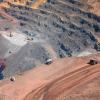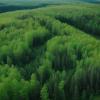
To mitigate the adverse effects of mining activities, high-resolution maps of mining sites are necessary. In a new study, researchers created a large-scale, openly accessible, global map that almost doubles the coverage of previous datasets.
Population growth and efforts in the clean-energy transition have spurred a growing need for minerals and other raw materials worldwide. To keep up with the demands, mining activities are expanding into biodiversity-rich areas, threatening the environment and human wellbeing with fragmentation, pollution, and habitat destruction.
To quantify the adverse impacts of mineral extraction and to be able to find the best mitigation measures, it is essential that we have a clear picture of the locations and magnitude of mining activities. In a new study published in Nature Scientific Data, an international team of researchers led by IIASA and the Vienna University of Economics and Business, present a new dataset that significantly expands the coverage compared to previous global-scale datasets of mining sites.
Despite the increasing availability of Earth observation data and machine learning approaches, automated mapping of mining sites is not reliable on a global scale, as mining areas vary in appearance based on mineral types and extraction methods. To produce a high-quality, reliable global mining map, visual interpretation of high-resolution satellite images is necessary.
In the study, researchers inspected more than 34,000 mining locations across the globe using satellite images taken by Sentinel-2 in 2019, extending a previous global mining dataset that covered 6,201 active mining sites on 57,277 km2. The new version covers 101,583 km2 of land and more than doubles the number of polygon features used in the assessment from 21,060 to 44,929, covering large-scale as well as artisanal and small-scale mining.
“The study highlights the impact of the global mining sector on our environment,” says Victor Maus, the study’s lead author and a researcher at the IIASA Novel Data Ecosystems for Sustainability Research Group and at the Vienna University of Economics and Business. “More than half of the mapped mining area is concentrated in only six countries.”
Mining land use is concentrated in Russia, China, Australia, the United States, Indonesia, and Brazil. Another 21 countries account for 39% of mining areas, and the remaining 118 countries add up to only 9% of the total mapped mining area.
“This is the most comprehensive database on global mining areas to date,” says Ian McCallum, study author, and the leader of the IIASA Novel Data Ecosystems for Sustainability Research Group. “It creates opportunities to improve environmental pressure and impact indicators of the mining sector and can ultimately support the development of automated (machine learning) systems to monitor mining sites worldwide.”
Reference
Maus, V., Giljum, S., da Silva, D.M., Gutschlhofer, J., da Rosa, R.P., Luckeneder, S., Gass, S.L., Lieber, M. and McCallum, I., (2022). An update on global mining land use. Scientific Data 9 (1) e433. DOI: 10.1038/s41597-022-01547-4. [https://pure.iiasa.ac.at/18124]
News

26 July 2024
Navigating new horizons to protect human and planetary health

17 July 2024
Forests endure as carbon sink despite regional pressures

01 July 2024


